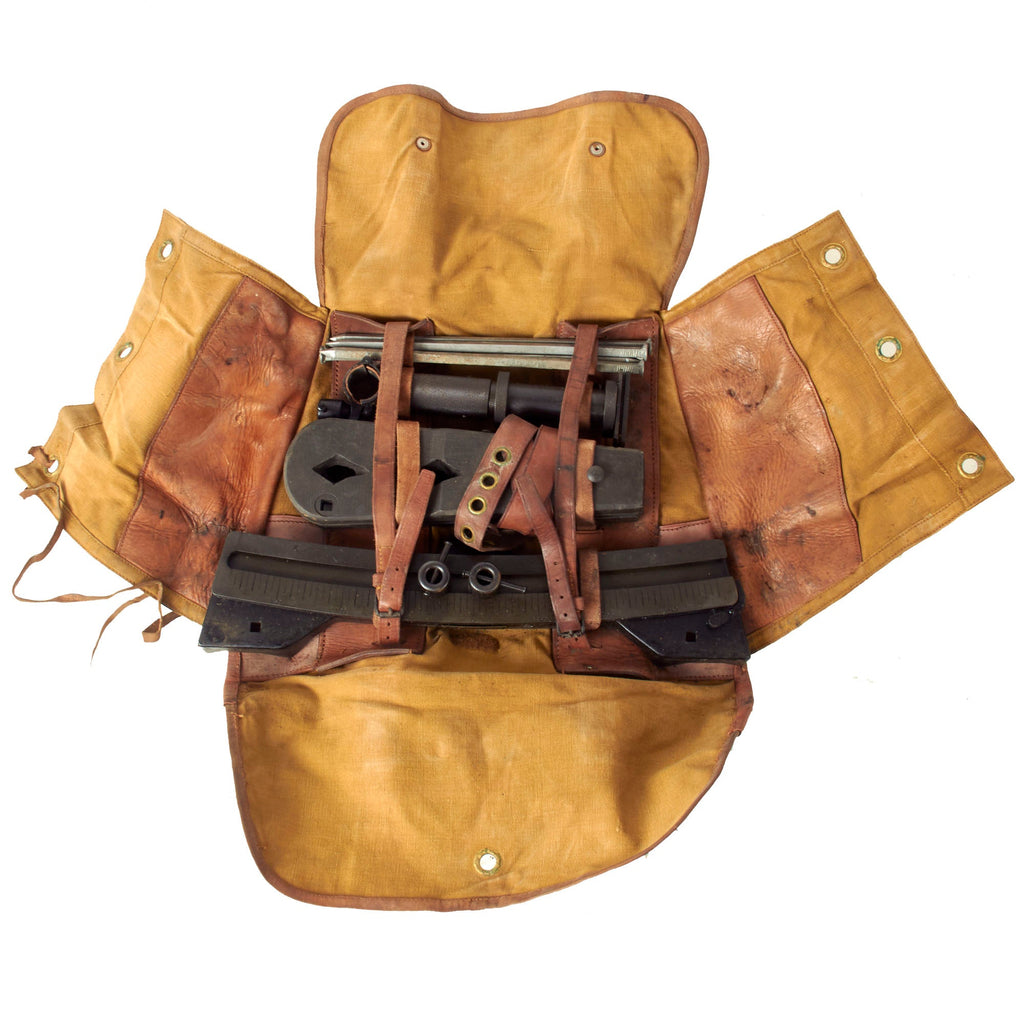Item Description
Original Item: Special Accessory: The MG 13 Sustained Fire Set Contains a folding bipod base, a butt monopod, a traversing base, and five square steel rods. Leather straps hold the bipod feet into specially shaped recesses to prevent movement. Two sets of recesses are provided for different width settings of the bipod. A beautifully finished monopod for the butt, featuring a leather pad in the attachment ring indicative of prewar quality standards. The butt monopod rides in a slot in the curved traversing base. The base is fitted with two limit stops to define the horizontal arc to be covered by fire. Five plated steel stakes hold the bipod base and the traversing base firmly to the ground. Another very scarce German LMG accessory. The forerunner of the MG 34 Sustained Fire Set, it differs only in the diameter of the butt monopod clamp. Supplied in a very well made canvas and leather carrying case.
The MG 13 (shortened from German Maschinengewehr 13) is a German light machine gun developed by converting the Dreyse Model 1918 heavy water-cooled machine gun, into an air-cooled version.
History
Dreyse Model 1918 Machinegun: In 1907 Louis Schmeisser of Erfurt patented a machinegun named in honor of the inventor of the needle gun by the heads of the factory where it was made which was founded by Dreyse. The Dreyse machinegun was a heavy, usually tripod mounted, belt-fed and water cooled machinegun.
The 1907 model was succeeded by the 1912 and later 1918 models. On ascending to power Adolf AH immediately ordered the Model 1918 to be modernized by the company Simson in Suhl. It became the MG13.
Usage
The MG 13 was introduced into service in 1930, where it served as the standard light machine gun until 1935. It was superseded by the MG 34 and then later the MG 42.
MG 13s were sold to Spain where they retained the designation of MG13 and to Portugal which used them into the late 1940s as the 'Metralhadora 7,92 mm m/1938 Dreyse. Those MG 13s that were not sold were placed into storage, and these later saw use in World War II by second line German units. As it was easy to handle and reload, many second line troops could use the MG 13 with efficiency.
On later examples a 75-round saddle drum was also used. It was equipped with a folding butt stock and a carrying handle It was used in the turret of the Panzer I tank.
The Chinese Nationalist Government also imported the MG 13 with the Panzer I Ausf A. tanks from Germany in 1936. The MG 13 was also used against the Japanese Imperial Army during the Second Sino-Japanese War. Portugal used it as squad automatic weapon during Portuguese Colonial War, under the name m/938.
- This product is available for international shipping. Shipping not available to: Australia, France, or Germany
- Due to legal restrictions this item cannot be shipped to Australia, France or Germany. This is not a comprehensive list and other countries may be added in the future.
- Not eligible for payment with Paypal or Amazon









